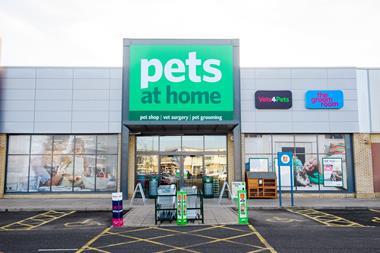
Year to date, the share prices of the three global staples mega caps, AB InBev, Nestlé and P&G, are up 50%, 30% and 25% respectively. The superficial explanation is that in a world where interest rates are negative in Europe, and low and likely to be cut further in the US, bond proxies that offer predictable dividends outperform. Whilst this is true, it also misses what’s going on bottom-up with the staples titans.
After years of losing share to smaller agile brands who have been more alert to local trends, the empire is striking back.
The genesis of the fightback is driven by a generation of new CEOs in the sector (we count 25 across staples since the start of 2017) who are more willing to embrace consumer change. They are looking to constructively reinvent the fmcg model, which involves taking more risk, especially around innovation and beating the disrupters at their own game.
There is a discernible shift in focus from margin to organic sales growth, which has required changing the innovation model through more impactful and locally tailored offerings.
Consumers are willing to pay a premium for brands that are convenient and offer a tangible consumer benefit vs competitors. It is no longer about big brands or small brands, but relevant and purposeful brands. The big staples companies have felt the pain in the past decade through slower growth, and have in some cases resorted to aggressive cost savings to make up the shortfall. This has been proven to be a bankrupt strategy, as evidenced by Kraft Heinz’s profit warning in February.
Instead the focus is on speed to market, which requires wholesale organisational change, smaller, agile teams, less red tape and more accountability.
This shift is being enabled by big data to drive differentiated insights through precision marketing, which smaller companies find hard to replicate. With more money being ploughed into in-house venture capital, it’s making it less likely the staples giants will be blindsided. If that doesn’t work and they can’t beat the smaller guys, buying them has also been an effective (albeit expensive) strategy.
In Q2-19, Nestlé delivered 3% volume growth, which is its best performance in three years – with the standout being the US, growing at the highest rate for seven years.
P&G’s impressive 7% group organic growth in Q4 was driven by 10% growth in fabric, home and healthcare. It is winning again via premium innovation rather than discounting and promoting, echoing the golden years of P&G in the noughties. These strong results are the culmination of a lot of hard work to reboot organisations, but there are losers on the other side. A resurgent P&G is no longer donating share to European HPC companies, who as a result are finding life much tougher.
But what is this improved performance worth? Whilst valuations of these mega caps reflect better operational performance, when these supertankers turn, history tells us they can run and run and go on to greater heights. Selling perceived ‘expensive defensives’ might seem logical but may end up being the wrong decision.
Given rising trade tensions between the US and China and with bond yields plummeting, it hard to see why the staples mega caps shouldn’t continue to go from strength to strength.



















No comments yet